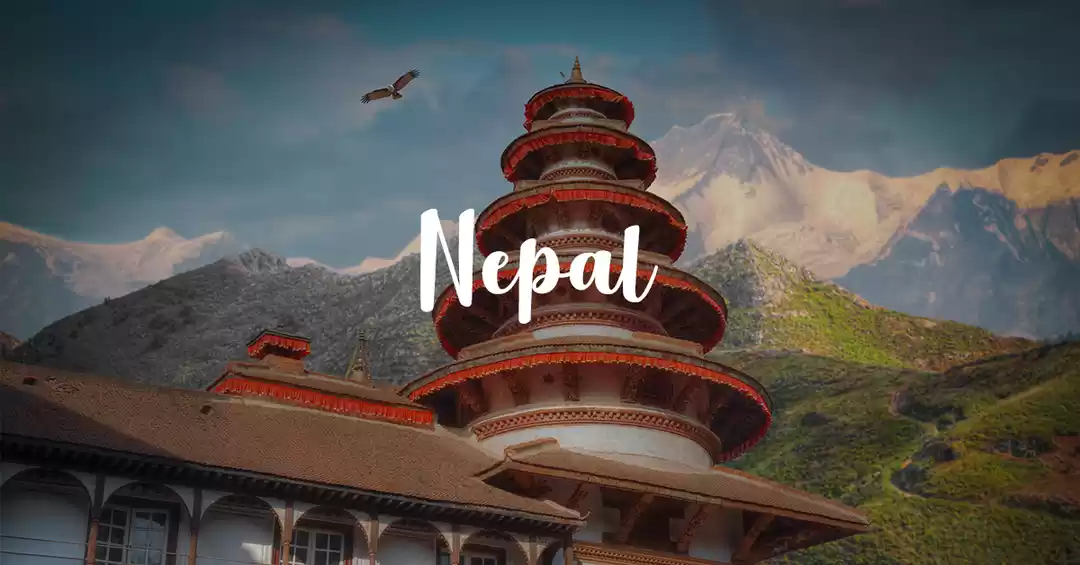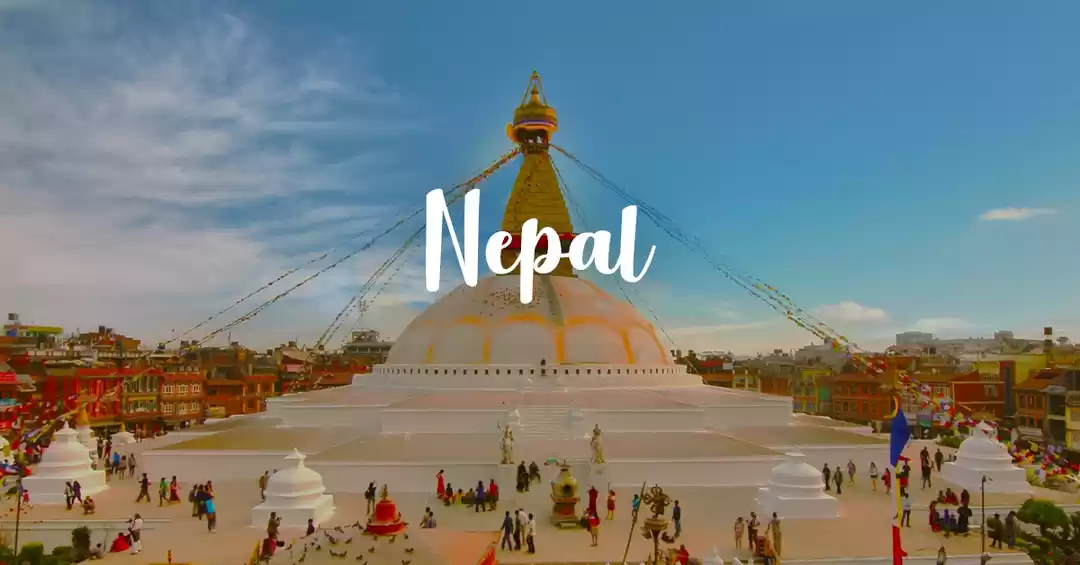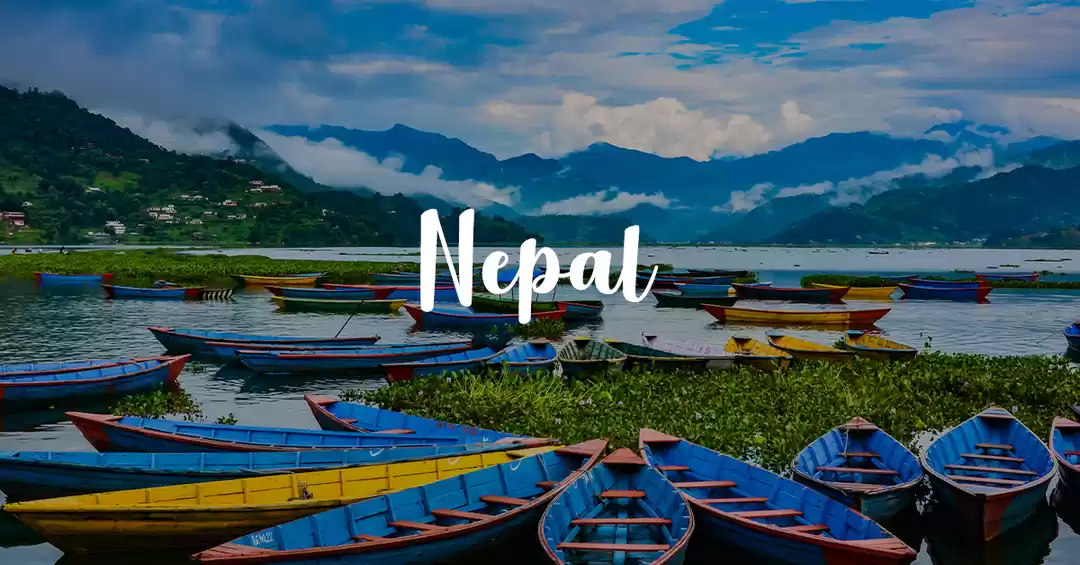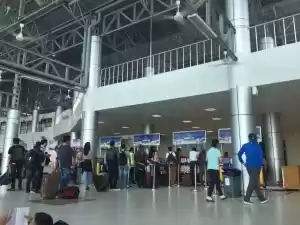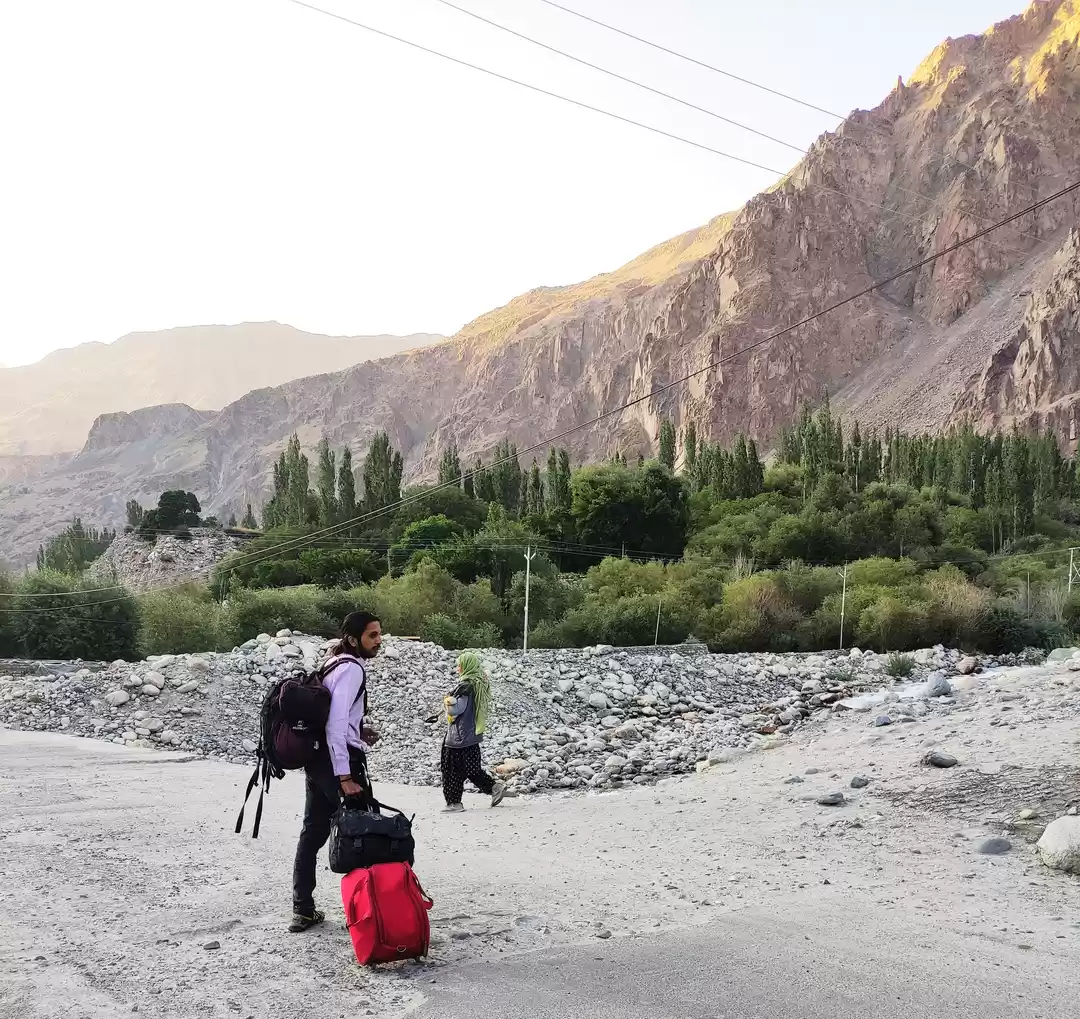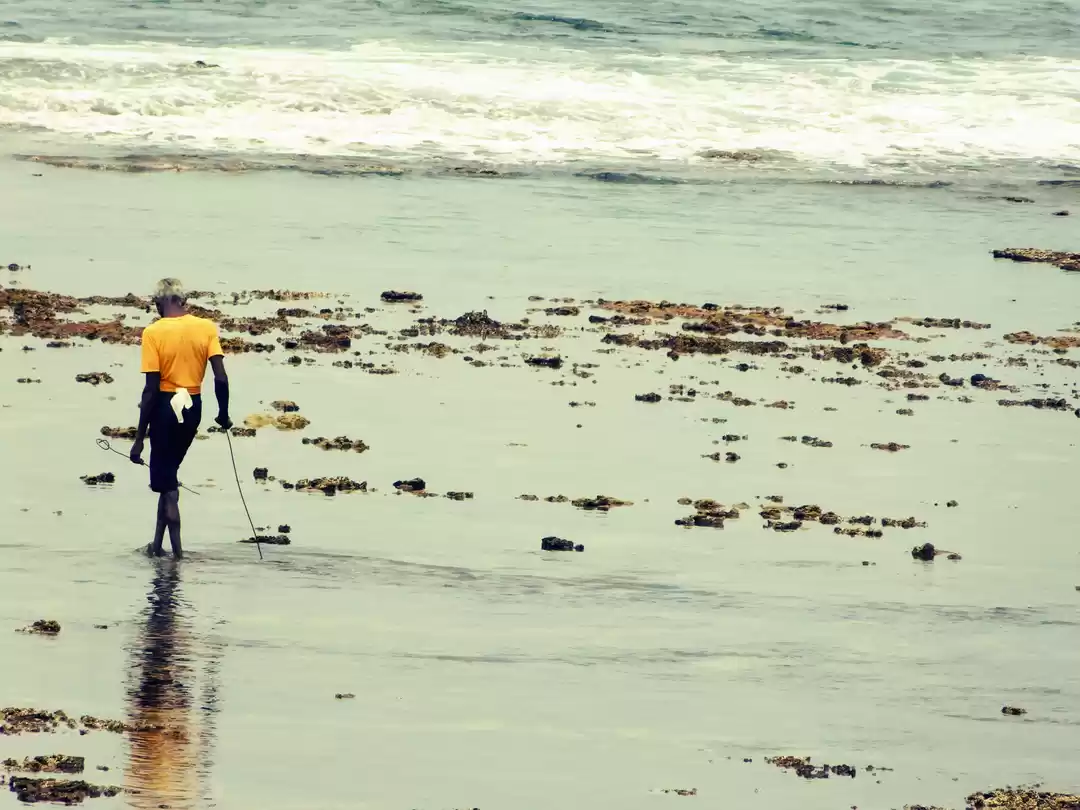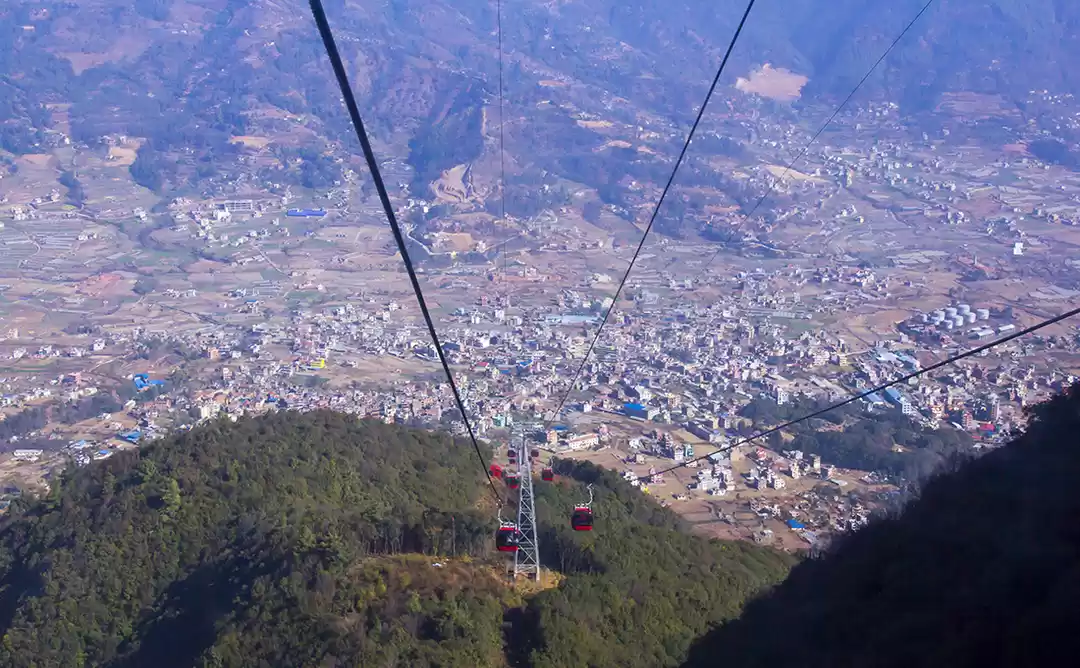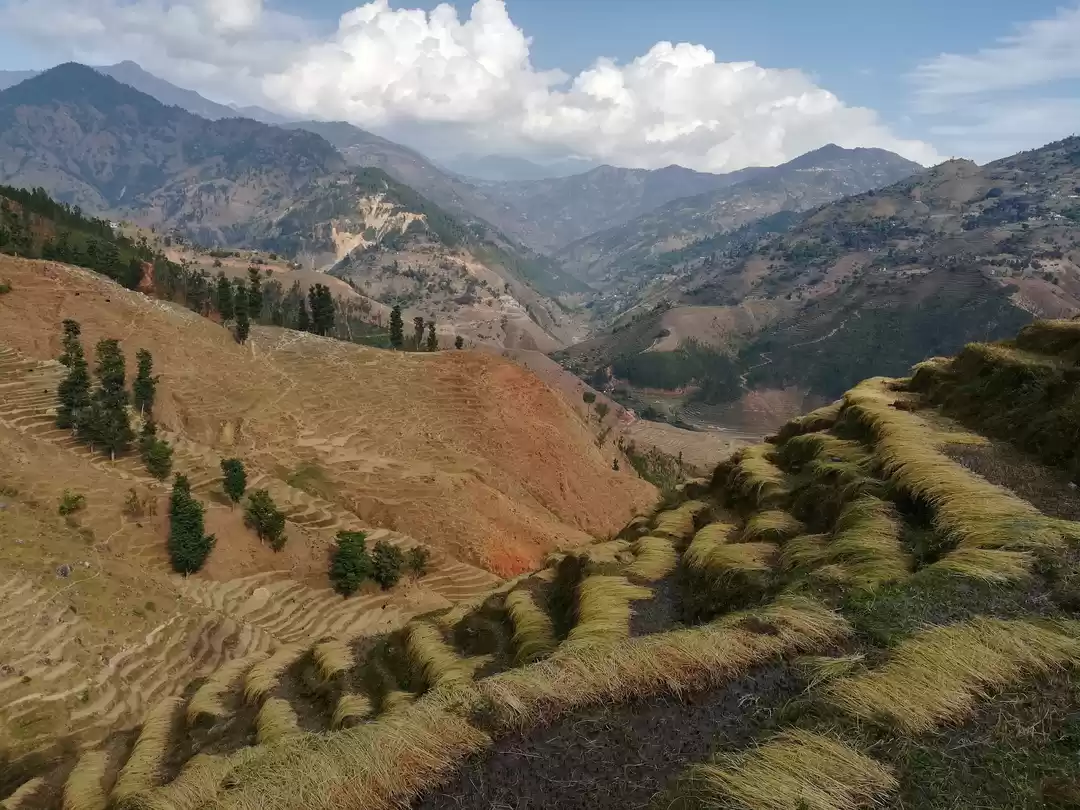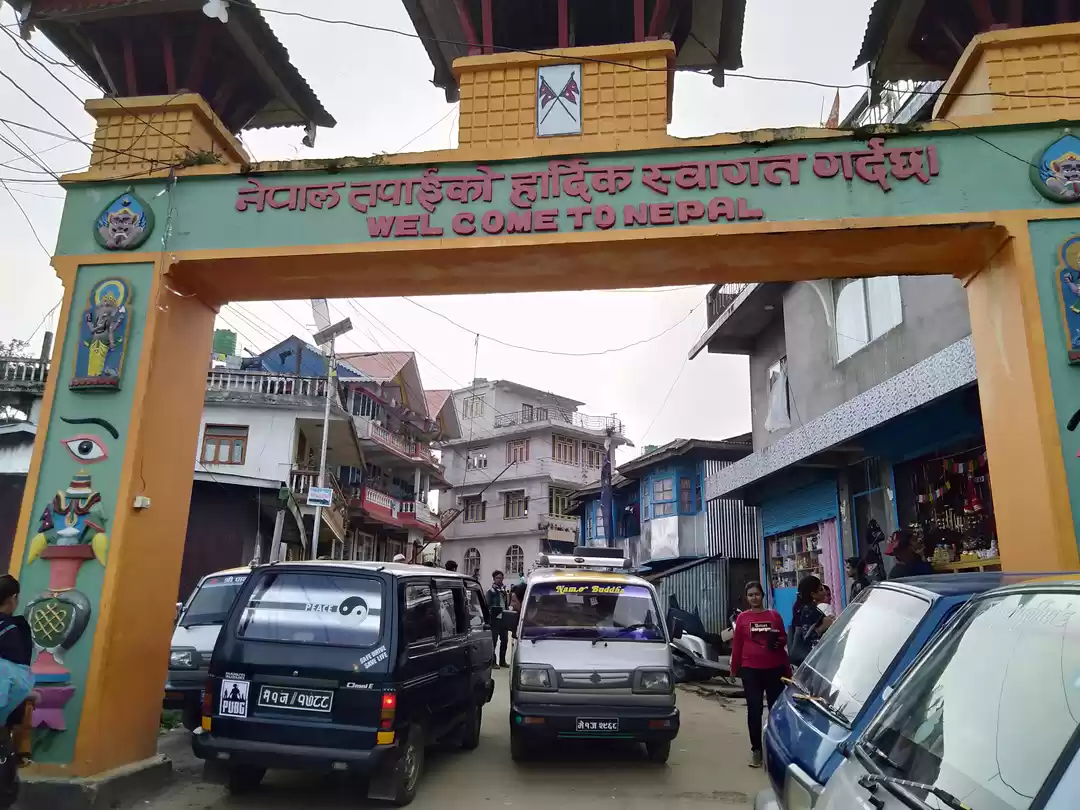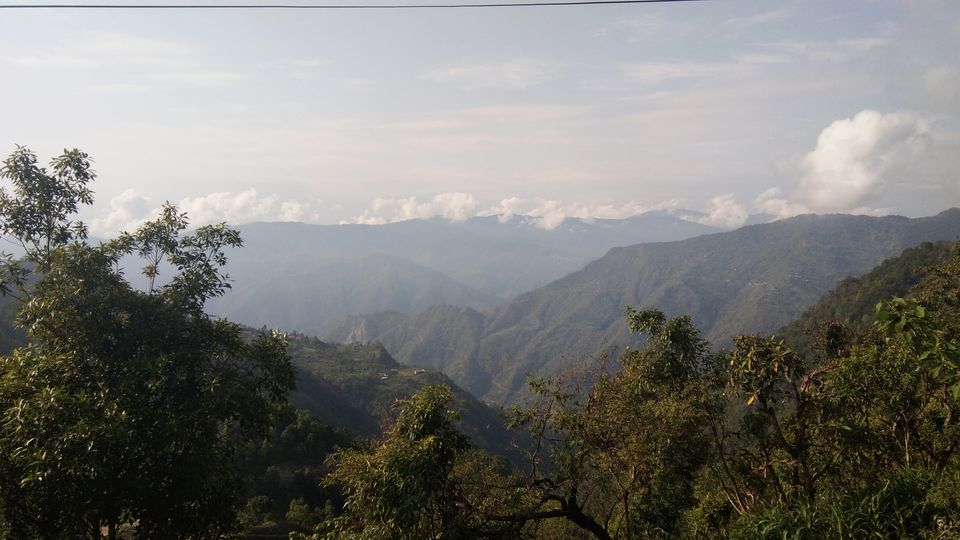
So you have been in Nepal for a good few weeks now. You have visited Kathmandu and the UNESCO sites of Patan and Bhaktapur. You have been to the lakeside city of Pokhara, and from there proceeded to go on an amazing trek that provided you with some of the best memories of your life (at least I hope you did). You have even ventured south to Chitwan and seen the rhinos and the crocs. But now what? You still have another week until your flight, or maybe even a little longer, and you are lost without an idea of what to do.
This was the situation I found myself in. My flight was in two weeks’ time but there I was sat in Kathmandu with a fully ticked off "to see list" and an empty cup of coffee. The Mardi Himal Trek (tick), rafting the Kaligandaki (tick), Bhaktapur, Patan, Dhulikhel, Nagarkot, Bandipur (all tick). I didn’t fancy doing another trek so soon after finishing my first, and, as much as I liked Pokhara and Kathmandu (tick and tick), I just couldn't stay there any longer, leaking money on beer and curry. But where to go?
"Why don't you go to Ilam?" Tony, the hotel receptionist, asked.
Hmmm, interesting. Definitely an idea. I had heard how beautiful Ilam was with its endless horizon of tea gardens. But I hadn’t heard anything else. What about other places nearby? What about good hikes, quaint villages and unique cultures? Why had no one mentioned any of these things? If I was going to travel 12 hours into eastern Nepal, I would need more than just 2 days of gardens. I had very few ideas however, and was blessed with an abundance of time and surprisingly good Wi-Fi (a real rarity in Nepal). So I decided to do a little research on the matter.
This however proved very tricky. Rough guides (my go to source) had no information. Lonely planet was pretty useless. Same went for Traveller. And I could only find one blog entry, but that was written in 2013. Eastern Nepal was looking like a no go.
But then, just as I was about to go back to the drawing board, I stumbled upon a website, www.indrahomestay.com, which specializes in organizing eco tours in eastern Nepal. The site had photos of cute hillside villages combined with panoramic views and colorful communities and people. Jackpot!
I am usually quite a thrifty traveler. I organize my own routes, use public transport as often as I can, and I try and blag cheap rooms at the hotel. And I certainly never go for a guide. I’m from the tech generation after all; my smartphone is my guide. But, due to a serious lack of information on this region, I didn’t quite trust this strategy. Being stuck in a remote village with no information and a potentially serious language barrier was a daunting prospect. I therefore decided to contact Indra Homestay to discuss a potential tour.
Milan, the owner, was delighted to chat to me. Eastern Nepal, he tells me, has so much to offer visitors and he is sad for those who miss the opportunity to discover it. ‘The combination of beautiful scenery and friendly vibrant cultures make it the ideal location to really see and feel Nepal’. He has spent the last ten years travelling the area with the aim of finding beautiful spots to include in his eco tours, and he now feels he has created a handful of itineraries which perfectly display all that the area has to offer.
After speaking to him for half an hour and hearing his obvious passion, combined with my trepidation about traveling alone, I decided to change my usual tact, and go for it. I organized a bespoke six day tour with one of his guides setting off in two days’ time.
What followed was a truly amazing experience.
As I was on a bit of a budget I asked to take public transport rather than the private jeep that they offer to groups. Milan recommended against, arguing the case for comfort and the ability to stop when and where we wanted, but he understood my limitations and put plans into place. Therefore me and my guide Suma caught the 05:30 bus from Koteshwor and got underway on our 12 hour journey.
Filled with anticipation, I was able to stay awake for the first stint of the journey, taking in the sights and seeing the sun rising over the corn fields, rivers and mountains. It was so picturesque that it made you forget about the unseemly hour (okay maybe a slight exaggeration).
After two hours, we pulled over for a bite to eat. I was given with the choice of curried potato or sel roti (a kind of fried doughnut-bagel hybrid). Even after traveling in India, I wasn’t quite accustomed to having curry at such an early hour so I went for the sel roti. Straight out the pan. Very tasty.
Back onto the bus I got, and within 5 minutes I was out. I am blessed with the ability to sleep on buses, so the rest of the journey went surprisingly quickly. I don’t think the drive will be too much of a problem for those who aren’t as fortunate however, as when I was awake I was treated to a variety of different landscapes making for a very scenic journey. We drove through little villages and forests, passed rice paddies and fields sprinkled with banana trees and palms, and all the while we could glimpse the mighty Himalayas to the north. Not your typical monotonous UK motorway, that’s for sure. They reminded me of the sorts of roads that the crew of Top Gear would go in search of in one of their yearly specials.
Suma was also pointing out little places where they would usually stop in the jeep to pick fruit and get good pictures, as well as giving me little tit-bits of information about villages, their history, and some of their local dishes that he enjoys.
As we approached Ilam the landscape changed again. I was quickly reenergized as the luscious green tea plantations of Kanyam came into view, and for 40km these gardens stretched before us; a patchwork of green covering the rolling hills and the steep mountain sides. Littered amongst the fields were the blue tin roofs of local homes, a feature that makes Nepal’s countryside so unique and charming. It was a breathtaking introduction to Eastern Nepal.
The homestay at Shree Antu was very cute with a ski lodge kind of vibe and a pretty little flower garden out front. We were warmly welcomed by our hosts, and Suma and I were presented with a white shawl, a sign of welcome to visitors. They also brought out two what can only be described as metal towers to our table which contained a local eastern Nepali drink known as Tongba. The best description for Tongba would be a hot but slightly watered down red wine. I can’t really see it taking off in the UK, but it was okay, undeniably interesting in taste and something I hadn’t tried anywhere else. The east was certainly delivering on uniqueness.
Our dinner of Daal Bhat was served at around 20:30 and it came with a lovely potato and green bean curry and pickled spinach. I was absolutely famished from the journey, and tucked in straight away. It was only until half the plate was gone that I realized I should be documenting the food. Must do better tomorrow.
As we finished eating and we were letting the extremely generous portions settle, Suma told me about our plans for the next day. “Up at 4!” Shree Antu, he told me, is known in the district for having great sunrise views and they are not to be missed.
So with that, we made way to our rooms for an early night, and another early rise on day two.
After a good, albeit far too brief, night sleep in our cozy rooms, Suma and I were up and ready to go by 04:30.
20 minutes later, at the foot of Shree Antu tower, we were greeted with the sweet smell of brewing chai and a tingling sensation from the frying of the chili and onion of the pokora. We had to wait just 10 minutes until the sun began to show. Whilst timing was perfect, our choice of day was unfortunately not. Clouds blocked most of the sky and the rising sun could only be peaked through a small rectangular opening. That early rise and 20 minute uphill walk for nothing. Thank god I had chai to help me through this tough time.
Feeling a little guilty Suma tried showing me some pictures of the sunrises he had seen from his previous trips. I understood the attempt, but this gesture didn’t quite achieve the desired effect. I took another swig of chai.
We watched as the other locals began to gather on the hill in what turned out to be a bit of a social hub and selfie hot-spot. The photographers were undeterred by the lack of sunrise and continued to snap away. We finished our tea and decided to make our way back to the homestay.
I allowed myself a little time to nap, meditate and read a chapter of my novel, and then rejoined Suma in the homestays restaurant where we had breakfast and then got on with the rest of our day.
First things first. The tea plantations. Suma took me to a viewing spot overlooking the province of Ilam and its endless horizon of tea gardens. Whilst a little misty, the views were magnificent. What makes Shree Antu truly different is its less touristy feel. I have seen the tea plantations in Munnar, which are stunning and one of my favorite destinations in India, but they are very well kept and feel a little like an attraction rather than an authentic source of agriculture. Shree Antu’s plantations however are less well groomed and are sprinkled with an array of trees and bamboo shoots, giving it an untamed jungle like charm.
Suma pointed to a not too distance ridge of mountains. “That is India” he told me.
Shree Antu is apparently nothing more than a short trek from Darjeeling. The inhabitants speak the same dialect and they have only been separated by an international border for 100 years. The close proximity surprised me. Darjeeling is internationally recognized for its tea and beauty, yet Shree Antu is unheard of.
We’d looked at them from afar; but now it was time to get in amongst the gardens. Suma led me back up the hill and then down a pretty inconspicuous path. Two minutes later, at the bottom of the narrow lane, we came to an opening. A cute little lake, luscious green hills and wooden huts appeared to us. What a gem! We wandered through the tea for a good hour observing farmers picking leaves and young couples enjoying romantic strolls. With little pagodas and benches dotted throughout the gardens, it was perfect place for a date.
After a little exploring, we bumped into someone picking leaves and Suma asked if I would like to try. Why not? The young lad placed the basket on my back, wrapped the straps around my forehead, and with no instruction I was ready to go. I have no idea if what I was picking was right. The lad was smiling at me which was encouraging, but I have found in Asia that people are often too polite to criticize or tell people no. I enjoyed the experience regardless, but was glad to stop after a few minutes. The forehead straps helped, but boy did the basket get heavy! Fair play to the little women you see carrying them. They obviously have more core strength than I do. Back to the gym I go!
One last stop before lunchtime saw us take a little detour to the local tea packing factory. Here they store, dry and pack the leaves and then ship the bags all across Nepal and India. The staff were more than happy to greet us, and they answered my questions as they showed us around the factory. But they had a strict no photo policy. I didn’t quite get an explanation for why that was. I like to think it’s because they have a secret recipe that competitors are trying to steal. A bit of a Wonka vs Slugworth situation. I’m sure the reality is a lot less interesting.
After grabbing a light snack, we headed out again. This time we took a slightly different route and ambled towards the outskirts of the village. We jinked between cute little houses and homestays and wondered down trails that lead us through the jungle like wilderness. It felt very Vietnam/ Cambodia meets the Shire. For large chunks of the afternoon I had the Hobbiton theme tune rattling around my head. We chatted to the locals as we went along, sitting down with them and sampling some local tea, as well as being introduced to the kids for them to practice their English. We rarely got past ‘what is your name’ and ‘how old are you’, but it was very cute. The kids always had great beaming smiles and a cheeky manner. We called it a day after a few hours and headed back to the homestay.
We were treated again to a tower of Tongba and a delicious Daal Bhat. This time it came with a pumpkin curry, which I think was one of the (if not the) nicest curries I have had in my 6 weeks in Nepal (would definitely recommend to a friend), and I remembered to take a picture.
We were later joined by several other guests who were there for a family party. They were from a rural part of the district and their English wasn’t great, but they were extremely friendly and keen to chat. One member of the party was more confident than the rest (Dutch courage, I later discovered) and attempted talking to me. Unfortunately the bottle of whiskey he put back, whilst giving him confidence, did nothing to improve his English and I struggled through a very slurred half hour conversation where guess work and sign language were heavily relied on. And with that, day two came to a close.
Suma and I discussed waking up early again to see if we could enjoy a better sunrise, but the cloud cover the night before made us doubtful of our chances, so instead enjoyed a nice lie in. We had a leisurely morning, got our stuff together then bade goodbye to Shree Antu. Our farewell was just as ceremonious as our welcome, and I was presented with a little bouquet of flowers. We got into a shared taxi from the center of town and headed towards Kanyam.
We dropped our bags at our homestay and had a quick breakfast before setting out for another day amongst the gardens. The homestay had a different feel to the first, with this one being on the high street above a shop. So as you can imagine, less quaint than Shree Antu, but it was perhaps a better reflection of the living standards of most people in Nepal which was interesting.
The sun was out so we decided to walk to the tea plantations rather than taxi. We followed the weaving mountain road flowing out of town, passing through several little village centers and the occasional house set into the slopes. There is a real fondness for colorful one-story houses with rose gardens and picket like fences in eastern Nepal, which, set amongst the backdrop of eternal emerald hills, is extremely pleasing on the eye.
After an hour we arrived at Kanyam’s famous gardens. The tea plantations are owned by the state meaning they are better maintained than in Shree Antu, and are absolutely breathtaking. It was here that Suma revealed he used to study photography at university and that he was also employed by Indra Homestay as a photographer for the website.
So armed with his camera, we bounded into the gardens and began to roam its winding paths. You could see families picnicking in little openings between the bushes, couples handholding and getting lost amongst the fauna, and of course, Asia wouldn’t be Asia if there wasn’t a seemless tide of young groups clambering through the fields all taking selfies and attempting to get the perfect instagram or profile picture.
We wondered for a good two hours before noticing the time and we were still nowhere near ready to leave just yet. It is so easy to lose track of time here. We were a little parched however so we made a b-line for the road and the stalls. Hmmm what to have?
We sat there sipping our green tea enjoying the panoramic views and chatting, comparing university life, when we suddenly heard the sound of tires screeching and an orchestra of car and bike horns. Just to our right, a truck that had been transporting tea had dropped some of its cargo. 14 20kg bags of tea were strewn across the mountain road and had caused a pile up.
A few of us bystanders ran over and started shifting the bags to clear up the traffic. Most of the bags were undamaged, but one hadn’t been so lucky. It was torn open from top to bottom spewing tea leaves across the road. The driver came over with some gaffer tape, sealed the bag and then walked off back to his truck, leaving the remains lying in the road. Apparently the tea outside the bag was no longer his issue and he drove off.
Before I knew what was going on, everyone was up and had left the street. I was left standing alone by the remnants.
It was as if the volume had been switched to mute, and I could the feel the surroundings gradually sliding into sepia tone. I was in a ghost town from a Western after some great tragedy had befallen the locals. I could practically see the tumble weed sweeping across the road (although looking back that might have been the tea).
Seconds later people began reemerging from their houses and the color started returning. One man came out carrying a wok, another with a big floppy sun hat, and one woman had a basket under her arm. What was going on? The noise levels began to rise and I could hear the stampeding of rushing feet. Suma came sprinting out of a restaurant with a plastic bag followed by other locals all carrying one of their own. Oh. Now I saw. The tea was apparently up for grabs.
A few minutes later, Suma and I were walking down the lane back towards our homestay with 250g of Ilams finest loose leaf green tea.
We headed back to the homestay via some more tea gardens, stopping along the way for a couple more pictures. We also popped in to a local café to grab another tea, going for black tea with lemon and honey this time, as well as a little restaurant where we ordered noodles with egg. As we waited for the food, I struck up a conversation with some of the local lads outside who are playing a game on a table outside. You will see these tables everywhere in Nepalese villages, with groups of men surrounding them. I didn't catch the name but it is like a mix between pool and air hockey, were players flick some sort of disc at their respective colored discs, trying to knock them in to pockets. It is surprisingly addictive to watch and as I found out, even more addictive to play. It was just a shame my ability didn’t match my enthusiasm.
We spent the evening exploring the village we were staying in, and in particular trying to hunt down a nettle soup that Suma highly recommended. He learned that I was a vegetarian and he wanted me to taste a different local delicacy. Most homestays will not serve it due to a lack of demand however, so we would have to look elsewhere. We spent the next half hour popping into people’s homes and opportunistically asking people if they were cooking it that night and if we could join them for a bowl. This was such an incredibly strange way to spend the early evening and definitely a little outside my comfort zone. You’d be considered insane if you tried something like this in the UK. People were extremely friendly about it, but unfortunately no one was cooking any that night. So admitting defeat we went to a nearby restaurant and ordered Daal Bhat and a Gorkha beer.
We had seen the beautiful tea plantations, and now it was time to move on and see a slightly different side of eastern Nepal. So we got up, had our breakfast and made our way to the bus stop to catch the 08:00 bus to Dharan.
One of the pluses of visiting eastern Nepal around monsoon season is that the views you get are unparalled. The slight fog that sweeps over the hills and across the valleys at times, also give the region a real mystical aura. However a very real issue with this season, is the rain. The rains can really disrupt travel. The 08:00 bus never arrived, and the 09:00 bus arrived just before 10:00. Visitors should be warned that being on a strict schedule for these parts is not the easiest. I certainly wish I had more time or (and) money because relying on public transport was eating into my already pressed schedule.
On arrival, Dharan seemed to me to have a much more Indian like vibe than most other cities I had been to in Nepal. The chaos of the place with the tuk-tuks zipping through traffic and the abundance of cafes serving chair around the bus station reminded me of my time in southern India. Another reason for thinking this was the food. We stopped in a little Indian restaurant that was serving paratha and masala dosa. I just couldn’t refrain from going for my personal favorite of chhole bhature. If Indian isn’t your thing and you want to stick to Nepali dishes, Suma told me that if we had gone with the jeep, he would have recommended we stop in Itahari and ordered some specialty dishes from there. Being based on the a river, Itahari has some delicious fish courses to entice visitors. Luckily as a vegetarian, missing that stop didn’t affect me too much.
We boarded another bus and made off up the mountain towards our next destination of Rajirani, set deep into the mountains and a really remote part of eastern Nepal. We sat in the front compartment of the bus, basically sitting with the driver, and got to enjoy another majestic mountain road. The man sitting next to me turned out to be living in Hong Kong and was returning home to see his family who he hadn’t seen for 6 years.
We spent the journey chatting and he explained to me what it was like living in this region when he was growing up. If he needed to get to Dharan 20 years ago, he would have set off at 06:00 and would have been walking all day. To get back would have taken him two days. Tourism is still very uncommon but the improved road network has made it easier than ever to explore this region. Rajirani is a place he highly recommends.
We said goodbye as we exited the bus, and we stepped onto the pavement in Rajirani.
Suma showed me around, leading me from the high street and taking me to the lake where we went for a nice stroll around its perimeters. As we walked, we spotted people rafting and groups of young men fishing whilst playing native music through their speakers. The music and the dropping sun was so calming and after a little while Suma said he was a bit tired and asked if I minded him going back for a snooze. Rajirani seemed safe and pretty small. I assured him I’d be fine by myself.
I continued to circle the lake with the Nepali music floating across the water, when I passed a young group of boys playing football. I can never resist getting involved when I see a football so I wandered towards them. Without even having to ask, they kicked the ball in my direction me and beckoned me to play. I had an absolute shocker and did not represent English football well at all. Must be how the English football team feels during the world cup.
I walked away from my embarrassment and made my way up a nearby hill as the sun was beginning to set. I walked for about 15 minutes, passing a homestay and what appeared to be an abandoned summer camp site, and then came to some rice paddies and a bit of a clearing. I had just missed the sun, but was treated to a beautiful post sunset view.
I went a different way back down to the homestay getting a bit lost in the process. I followed what seemed like a main dirt road, but which flowed straight down the center of a football pitch? Asia.
Back at the homestay I read in my room for a little while, letting Suma rest up, before heading out for a bite to eat. I was a bit fed up of Daal Bhat and asked if we could just get something small. So we went back towards the lake and found a woman serving noodles. As we sat there, a man in the corner called over and asked “Which country you from?” This is definitely the go to question I get asked in Nepal.
The man’s name was Limbo, or at least that was his nickname as he said western people often struggle with its pronunciation. Limbo had lived and worked in Bahrain for a flower and decoration company for 14 years and had returned to Rajirani 6 years ago. I was the first western person he had met since he had been back so he was very excited to get the chance to speak English again. His English was perfect, and we chatted about Nepal, Bahrain, my travels and a little about football as he had seen me playing earlier. He also liked reminding me about how his manager in Bahrain had been a British man named John and that he was a great man.
It turned out that we were staying in his brother’s homestay so he offered to walk us back after dinner. He polished of his second rice wine (or the second I saw him drink) and walked us back. He asked if we would like to join him for tea tomorrow morning and then be shown around some less well known spots of Rajirani. We kindly accepted and wished him goodnight.
We were out by 06:00 and crossed the street to meet Limbo. He didn’t emerge however for another half an hour. Apparently the previous night’s rice wine had sent him into a deep sleep and he had just woken up. He gave us a cup of green tea and showed us his homestay. He asked if it was better than his brothers. I declined to answer, not knowing the correct one, but I could confirm that it was a very lovely house.
He took us to a nearby garden which was famous in the area due to two snakes that a local artist had carved into a big stone. The garden itself was a couple of weeks away from being in full bloom and Limbo insisted that I came back in 2 or 54 weeks’ time. “At that time the stream will also be fuller and flowing faster".
He led us down a path round the back of the garden, and down a few flights of stairs. Then I understood the comment about the stream. To my left appeared Rajirani’s local waterfall. It must have been a good 10 meters high and with a fairly decent amount of water cascading down. Always a fan of a waterfall, especially a surprise one, and I can imagine that it would even more impressive when water is really flowing.
He insisted that we went back to the lake as we simply must see it one more time before we left. We obliged him and headed to the water. However we never quite got there. He paraded us around the village (I kept hearing him say ‘England’ to anyone he passed) and he simply led us to his friend’s house. Another tea was given to us and there we sat, enjoying the morning as it passed by. People popped in to chat to us, one woman quite eagerly pressing me to stay in Rajirani to marry her daughter, and people left us again to get on with their daily work. The Limbu people of Rajirani were undoubtedly some of the nicest people I have met in Asia.
For breakfast Limbo took us back to his homestay (he had asked his brothers permission to steal our custom) and on remembering me saying I had lived in China, he made us chowmein. Another demonstration of just how accommodating Limbu people are.
It was getting on and Suma and I were restricted by bus times. The last bus from Bhedetar to Dhuran (where we had to be by that night) left at 14:30 and we still had a few villages to try and see. So we hopped on the 10:30 bus and said goodbye to Limbo and Rajirani.
The bus took us to Dadabazar, where we decided to get off and walk up to the top of a nearby hill that had a temple and view tower at the top. We had an hour until the next bus so this was going to be a quick stop. We made our way to the top, enjoying pretty epic views, but then, just as we placed our foot on the first step of the tower, the clouds came in. We got to the top and were greeted by a wall of fog. Typical. It took us just under 30 minutes to get up and we calculated we needed 20 to get down, so we decided to wait 10 minutes to see if it cleared. It did not. Begrudgingly, we made our way back down to the bus stop with no pictures.
There we waited for the next bus. 10 minutes passed. We checked if we had missed it. Nope. It was on its way. Another 10 minutes. You sure we haven’t missed it? No, no. Definitely not.
And there we sat for an hour and half as the 12:00 bus never arrived. Annoyingly this waiting meant we were unable to see Dadbazar’s tree, famous for being extremely large and a gathering point for communities in the past. It also meant we wouldn’t have time to explore Namje which was listed on CNN’s 2011 list of best places to visit you’ve never heard of, and on my own personal list of one of the places I was looking forward most to seeing. Relying on public transport was beginning to get really annoying.
So we bordered the 13:30 bus and went to the last village on our itinerary. Bhedetar is known as the gateway to Kanchengjunga and is used as a platform for trekkers to start their journeys in the Makalu Barun mountain range. As a result it is a tiny bit touristy. Not Nagarkot levels, but certainly more so than Rajirani or Dadabazar. It was a bit more lively with a few more stalls and shops selling local products such as scarves and cheese, as well as a few shops selling last minute trekking equipment. Again, as we were pressed for time, we had to be quick. We made straight for the Namaste waterfalls a short walk away. The waterfall was a little more impressive than the one in Rajirani (sorry Limbo), so if you do find yourself in this area pressed for time, prioritize the waterfall in Bhedetar. It’s quite hard to describe waterfalls I find. So I’ll let the picture I’ve included do the talking.
It would have been nice to stay and relax by the waterfall for a bit longer. There were a few spots that would have been perfect to enjoy an afternoon of reading and gazing at the waterfall. But the last bus was on its way (hopefully) and we couldn’t miss it. So we collected our things and retreated back to the road.
The bus luckily did arrive, and an hour later we were back in Dharan. We spent a little time wandering around the center, checking out a few of its parks and local markets. Again, it was more reminiscent of a city in India and seemed a lot more chaotic than those in Nepal. I was getting a little leggy and fancied some food. I asked Suma if he wanted to get anything, but made the slightly cheeky request that we go for something western. I had a craving for anything that wasn’t noodles or rice. We asked around and tracked down the name of a bar that served cocktails and stone cooked pizza. I didn’t need any more convincing.
And there we sat for the rest of the afternoon and evening, enjoying a few cold beers and a vegetarian pizza. We chatted about the trip. The highlights, the disappointments, and Suma was also interested to hear of any improvements that could be made to improve Indra Homestay. Some of these things I will share with you in just a bit.
We had an early Daal bhat back at the hotel, although I definitely wasn’t able to manage a second portion as usual, and we went to bed early. We were heading back to Kathmandu the next day and had another early rise to come.
Conlusion
Eastern Nepal is a truly stunning part of the country, and I must share Milan's sentiments. It is sad that most travelers do not venture into this part of Nepal and see and feel the culture.
I saw such a vast variety of landscapes and I met so many wonderfully friendly people that I can't wait to come back and the visit again one day.
My only regrets come in the shape of my time scale and my choice of transport.
I wish I had maybe just a couple more days to explore as I felt my time in the villages on day 5 was nowhere near sufficient. I would also say that the journey to Ilam could have perhaps been split up. 12 hours in a bus is not for the faint-hearted. Perhaps a stop half way near Dharan would have been a good idea.
But perhaps the biggest mistake was not listening to Milan about taking a private jeep. I was on a budget so this wasn't an option, but if I was to do it again with a friend or a group, the jeep would definitely be the way to go. It would provide way more comfort, the opportunity to stop off and get some great snaps of some of the beautiful places you pass, and it would also save you from the problems caused by public transport.
If anyone is interested in organizing a tour to Eastern Nepal, visit www.indrahomestay.com, or contact them at info@indrahomestay.com. They also have a facebook and instagram page.
Frequent Searches Leading To This Page:-
Things to do in eastern Nepal, eastern development region destinations, nepal tourism photos, eastern nepal tour package



